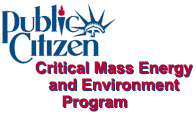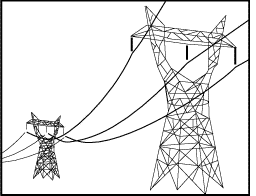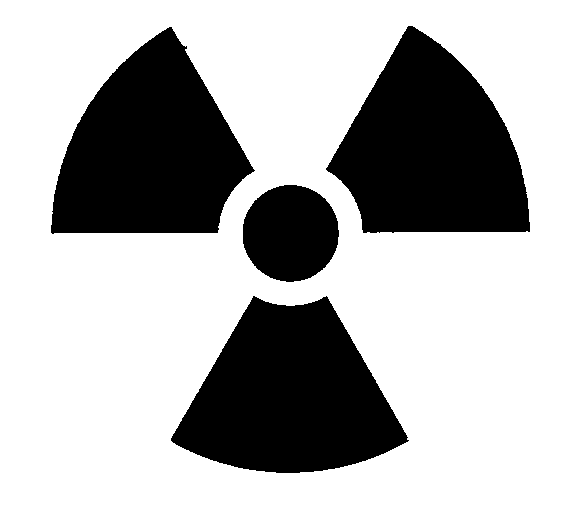
Radioactive Roads and Rails
Report on the Radioactive Roads and Rails Campaign
Submitted by Lisa Gue, Policy Analyst
November 2000
Background
For many years, Public Citizen's Critical Mass Energy and Environment Program has actively opposed the concept of a geologic repository for high-level nuclear waste at Yucca Mountain, Nevada. Anticipating the release of the Site Recommendation Report in June 2001 and the subsequent return of this issue to Congress - perhaps for the last time - Public Citizen co-operated with the Nuclear Information and Resource Service (NIRS) to launch the Radioactive Roads and Rails campaign in the summer of 2000.
Public Citizen's long-standing objections to the Yucca Mountain Project include reservations about the suitability of the site for a geologic repository, the industry-driven process by which the project has been advanced, and the unprecedented nuclear transportation scheme that would be initiated. The Radioactive Roads and Rails campaign focused specifically on the latter, as the issue likely to be of greatest immediate relevance to the greatest number of people outside Nevada.
Scope
I visited six states for Public Citizen in conjunction with the Radioactive Roads and Rails campaign: Indiana (July 5-8), Colorado (July 17-20), Louisiana (August 7-9), Iowa (September 6-8), California (September 27-30), and Ohio (October 3-6). These states were chosen in consultation with NIRS and the State of Nevada Nuclear Waste Project Office because of their location along probable routes for Yucca Mountain shipments. Indiana, Colorado, Louisiana, and Iowa were targeted because their state capitols lie along likely nuclear transport routes. In California, we visited San Bernardino County because of its key position for waste shipments entering Nevada from the south (the Department of Energy's transportation scenario maps show waste rerouted through San Bernardino County to minimize shipments through Las Vegas). Ohio was added to the Radioactive Roads and Rails itinerary when the Ohio Turnpike Workers (UE Local 791) passed a union resolution locally and nationally opposing the Yucca Mountain Project. Therefore the Ohio campaign focused on cities along the Turnpike.
Aims
In organizing for each city visit with the Radioactive
Roads and Rails campaign, I aimed to achieve the following:
- Strengthen/establish contact with groups and individuals committed to nuclear waste issues;
- Raise public awareness of the Yucca Mountain Project proposal and its local implications through public workshops, media outreach, and meetings with local statewide groups;
- Raise the profile of nuclear waste transportation issues on the agendas of local and state-level elected officials and agencies;
- Bring transportation concerns related to the Yucca Mountain Project proposal to the attention of Congressional Representatives as a constituent issue.
Achievements
The Radioactive Roads and Rails campaign was quite different in each of the states visited. Hearings on the Yucca Mountain Project DEIS had been held within the last year in Denver, CO, San Bernardino, CA, and Cleveland, OH. It was generally easier to organize in these places, since local elected officials and citizens' groups were already somewhat familiar with nuclear transportation issues. In Indiana and Iowa, as well, local statewide groups had previously organized campaigns against high-level waste transportation. It was important to visit these states in order to update people with the current legislative and regulatory situation and to keep Yucca Mountain on the agenda of our potential allies. On the other hand, it was sometimes more difficult to get press coverage if reporters were already familiar with the issue and therefore didn't consider it "news."
Nuclear waste transportation to Yucca Mountain seemed to be a new issue in Baton Rouge, LA. Environmental groups seemed to feel that there were more imminent concerns, and initially it was difficult to find local sponsors for the campaign. However, the additional necessary groundwork paid off in terms of good media coverage and the new connections I was able to establish. The Radioactive Roads and Rails events in Baton Rouge were also timed to coincide with the SEAC National Summer Training Institute, thereby involving some key student activists in the campaign.
Another variable influencing the campaign was each state's location along likely transportation routes and their relationships with nuclear utilities. The non-nuclear states of Indiana and Colorado, as well as Iowa with its single reactor and San Bernardino County, would be disproportionately affected by shipments of nuclear waste from other states "just passing through." This was readily perceived as an injustice. In Louisiana, on the other hand, most Yucca Mountain shipments would originate from the state's two reactors and it seemed that people were instinctively more likely to support the proposed nuclear transportation scheme as a means to reduce the amount of nuclear waste stored in their state.
To prepare for the campaign in each state, I tried to establish a local organizing committee and work with them to plan the Radioactive Roads and Rails events. In this way I hoped to facilitate among the host groups a sense of ownership and commitment to the campaign as an ongoing process, beyond my one-time visit to their state.
Generally, the main events of the Radioactive Roads and Rails campaign included a press conference, an interactive public workshop, and lobby meetings with elected officials. In Indiana, Colorado, and California, consultants with the State of Nevada were available to speak at press conferences and give presentations at public workshops. Through their participation, the Nevada perspective and a technical critique of the Yucca Mountain Project were incorporated into the campaign.
With some exceptions, press conferences were usually well attended and covered. An inflatable mock transport cask was a useful prop in terms of luring television cameras and also peaking the interest of bypassers to attract a crowd. I was also able to arrange meetings with several editorial boards and give individual interviews with radio networks.
Attendance at the public workshops generally depended on the advertizing efforts of local hosts. In a few cases, only members of the sponsoring organizations participated. They were already generally aware of the issues and the workshop could focus in more depth on specific details and strategies. On other occasions, workshop participants were very diverse requiring a more general, introductory workshop. In Colorado and Ohio, county Emergency Management Associations sent official representatives. Approximately 200 individuals attended Radioactive Roads and Rails workshops in the six states I visited. At the end of each workshop, participants were asked to write postcards to key elected officials, expressing their concerns with the Yucca Mountain Project.
Lobby meetings with Congressional Representatives were generally with staffers in district offices. As part of the campaign, I met with 11 U.S. Senators and Representatives and 6 elected officials of cities, counties, or states. Usually I would participate in these meetings together with representatives of local groups. I followed up on these meetings with letters to the district offices, including newspaper clips showing media coverage of the campaign in their district. I hope this has helped establish a basis for future meetings with D.C. policy staffers in the next Congress.
In many places I was also able to meet with emergency response personnel and state agencies responsible for hazardous material transport. These were typically difficult meetings and not always worthwhile. However, I felt it was necessary to inform state HazMat officials of our campaign and concerns, since they will likely advise the governors on the selection of nuclear transportation routes and regulations.
Specific achievements of the Radioactive Roads and Rails campaign included the following highlights:
- Strengthened working relationships within Public Citizen's existing network, and expanded the network to include new groups and individuals;
- Strengthened and expanded local coalitions and refocused their attentions on nuclear transportation issues;
- Communicated the national legislative and regulatory situation to local activists and learned about specific local concerns, concretely linking national energy policy issues and local safety concerns;
- Communicated success stories and strategies of citizens' campaigns in different areas;
- Brainstormed strategies with local activists;
- Equipped activists to lobby for local government resolutions against nuclear waste transportation through their jurisdictions;
- Alerted media to the local relevance of the Yucca Mountain Project proposal and increased public awareness through media coverage of our events;
- Initiated discussion of safety concerns with state HazMat officials;
- Raised the transportation aspect of the Yucca Mountain Project with Congressional Representatives, as a constituent issue.
Evaluation
Working on this campaign required a high level of personal commitment, long hours, and a lot of energy! Nevertheless, it was a wonderful experience in direct organizing, which brought me into closer contact with the people in our network and deepened my understanding of the national context for nuclear waste issues.
Overall, I feel that the achievements of the Radioactive Roads and Rails campaign increased Public Citizen's capacity to work effectively on current nuclear waste transportation issues. The campaign generated a momentum that must be maintained and strengthened leading up to the climax in Congress next summer.
Questions? Contact Lisa Gue at lisa_gue@citizen.org
| Critical Mass
Home Email Critical Mass |
 UTILITY DEREGULATION |
 NUCLEAR POWER & REACTOR SAFETY |
 RENEWABLE ENERGY |
 RADIOACTIVE WASTE POLICY |

|